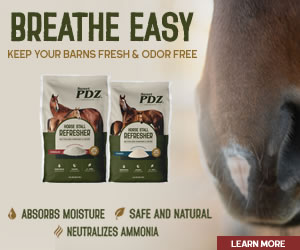Winter is coming in the Mid-South area and there is still time for horse owners to prepare their horses and pastures for the winter season. Winter comes with all sorts of challenges for horse owners but if planned accordingly, winter horse and pasture management should overcome obstacles owners face.
Shifting from Nighttime Turnout to Daytime Turnout
As winter approaches, a common management step is transitioning horses from night turnout to day turnout. This management step is common for barns that do not have the ability to do 24/7 turnout. Ideally, turnout time shifts from nighttime to daytime should occur once the daytime temperatures are not consistently above 75 degrees and before the daylight time gets too short.
For horses on 24/7 turnout, there are considerations owners must take into account as winter weather approaches. Obviously, horses should have access to stalls that will provide them with protection from intense winter weather such as freezing temps and wet weather. However, for owners with horses that do not have a designated barn, their pasture must have adequate shelter to protect horses from winter weather. The size of the shelter should be 240 square feet for two horses and an additional 60 square feet for each additional horse. The shelter should be three sided to protect horses from high winds and other winter weather.
If a shelter is not accessible, blanketing horses is strongly recommended. Typically, horses keep growing out their winter coats until December 22nd (winter solstice). For owners who want their horse to have a full winter coat, do not blanket until December 22nd as you will decrease the natural coat. However, there might be times before December 22nd where blanketing should be done. Blanketing horses should also be done in the following scenarios:
1. There is a chance the horse will get wet (ice, snow, rain, sleet)
2. The horse has had its winter coat body clipped
3. The horse is very young or old
4. The horse is NOT acclimated to the cold
5. The horse has a body condition score of 3 or less
As little as 0.1 inch of rain can cause cold stress since hair will be matted. When a horse’s hair coat gets wet, the hair cannot stand up and circulate warm air around the horse’s body as it would when the horse’s body is dry.
Blankets should be fitted properly to the horse and waterproof. Owners should also have multiple blanket options for their horses in the event a blanket gets damaged or needs to be cleaned/dry out. Owners should NEVER put a blanket on a wet horse.
Winter Temperatures and Pasture Grass
In the winter, pasture grass nutrient content such as crude protein (CP) and carbohydrates like non-structural carbohydrates (NSC) are at their lowest nutrient content even in cool season grasses such as Kentucky bluegrass, Timothy, tall fescue, ryegrass, wheat and orchardgrass. Cool season grasses will start to go dormant when air temperatures are consistently below 60 degrees. Warm season grasses like crabgrass, Bermuda, foxtail and Bahia will be well into their dormancy as those grasses stop growing when air temperature drops below 65 degrees consistently.
In terms of winter laminitis, horses and ponies that are insulin resistant can still founder in the winter, mostly due to the physiology of their hooves. The exposure to the cold can decrease the blood flow to and from the hooves, in addition to fluctuating hormonal changes to help horses cope with the cold. For owners with horses that are insulin resistant, there are management steps to prevent possible winter laminitis. Keep to your horses’ hoof trimming schedule (6-8 weeks), maintain a diet low in NSC and offer supplements containing zinc, biotin, methionine and iodine to help promote overall hoof health.
Hay supplementation and Round bale VS Square bales
As the temperature starts to drop, pasture grasses will become less lush and not as abundant. To combat this, owners should start supplementing pasture grass with quality hay before temperatures start to reach below freezing during nighttime. Hay should be given to horses under a shelter and off the ground to minimize hay waste and contamination from wet weather conditions and horse waste.
Whether an owner gives their horses a round bale or square bales depends on how many horses an owner has and also storage space for hay not in use. Round bales work great if an owner has numerous horses on their pasture since it will last longer than throwing multiple square bales two-three times a day. For owners with a few horses on pasture (two-three), square bales are effective and also allow an owner to better monitor hay intake and adjust as needed. All hay regardless needs to be stored in an enclosed building (separate from where horses are kept) and off the ground on pallets. Hay should also be covered with tarps to prevent contamination from possible water and wildlife waste.
Owners should consider herd dynamics as with any group feeding settings. If possible and if there is a strong pecking order, make sure to have multiple hay feeding stations for horses that are at the bottom of the pecking order. If absolutely necessary, the most submissive can be fed separately to ensure they are receiving their share of grain and hay.
Regardless if an owner feeds round bales or square bales, ALWAYS inspect the hay before feeding to horses. Feel, smell and visually inspect the hay for any signs of mold, trash or other foreign contaminates. A good saying to remember about hay, “When in doubt, THROW IT OUT”.
Tip and Tricks for Winter Horse Pasture Enrichment
Having horses on 24/7 turnout is ideal but in the winter months, pasture grass is more scarce and some horses do not have 24/7 access to hay. Without access to as much food, horses could develop stereotypical behaviors such as cribbing, wood chewing or wind-sucking. Luckily, there are several DIY, inexpensive enrichment options owners can do for their horses.
1. Grooming: reinforce your bond with your horse. Use this time to find your horse’s favorite spots for scratches and rubs. Additionally, winter time is more critical for owners to pick their horse’s feet everyday especially in snow and ice. Snow and ice can accumulate in hooves, making horses more prone to slipping in addition to more stress on tendons and ligaments. Always have a hoof pick ready whenever you check your horse during the winter.
2. DIY toys: got empty, plastic milk or juice jugs? Recycle them into pasture shelter toys similar to commercial horse toys like Jolly balls. Clean out the plastic jug, attach a cord (sturdy piece of twine) to the neck of the bottle to tie somewhere inside your pasture’s shelter then cut slits in the jug to grip treats or make big enough holes from which small treats will drop when your horse moves the jug around.
3. Enrichment walk: change the scenery for your horse by going for a walk around the pasture or your farm. Besides enrichment, this is also another good social bonding opportunity between horse and owner.
4. Scavenging/Enrichment box: take a cardboard box (no staples and tape), fill the bottom of the box with food as a reward and add in horse safe filler of choice. Fillers can be water bottles filled with rocks or bells, toilet paper rolls, crumpled up paper or pinecones. The box will need to be deeper than a regular feed pan.
5. Egg carton: take carrots, apple slices, celery sticks or any other of your horse’s favorite treats and place them in an egg carton or cardboard drink tray. Getting the food out of the grooves can be challenging for your horse, especially if the carton is closed.
Any further questions about late winter pasture management, please do not hesitate to contact your county’s Extension office. UT-TSU Shelby County Extension can be reached at 901-752-1207 during normal business hours Monday through Friday 8am-4:30pm CST.










